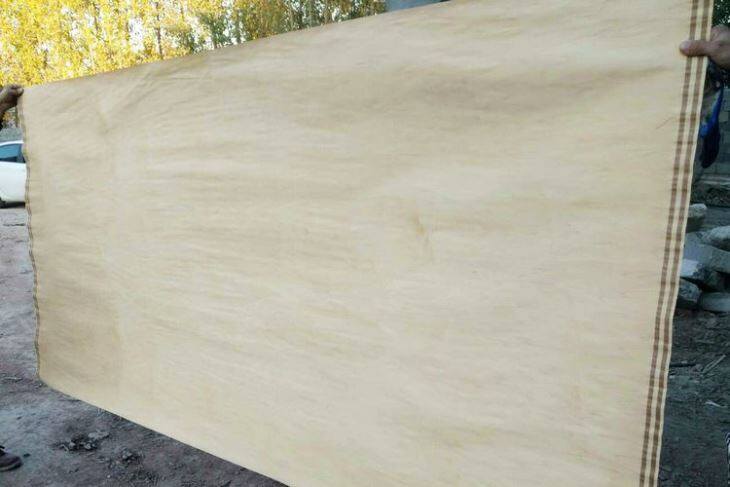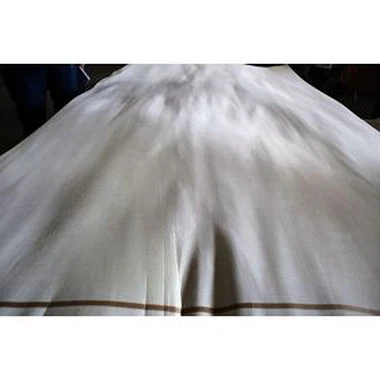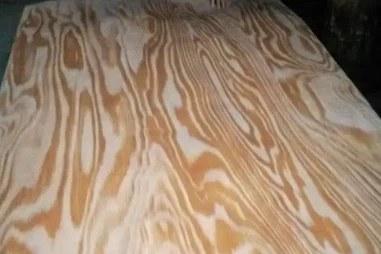What is Rotary Cut Maple Veneer
A whole log is mounted in the center of the lathe and turned against a sharp blade, much like unwinding a roll of paper. It is the most economical method of cutting. Rotary cut veneer can be wide enough to produce a full-sheet, or single piece faces.Rotary cut Maple veneer produces bigger grain pattern than sliced Maple veneer and delivers the art of nature in unique ways. It is applied in paneling, and then further in kitchen cabinets, closet doors & shelving, furniture & built-ins.
Advantages of Rotary Cut Maple Veneer
Great Appearance: Maple hardwood's beauty is undeniable. It comes in a range of warm colours, including neutral beiges, reds, browns and chromatic grays, that complement almost all home decor colour schemes. If you want a darker floor, it can be stained or, better yet, dyed. Maple has less grain than other wood varieties which accounts for its smooth, clean appearance. If you're looking to give your space a subtle style reminiscent of European charm, Rotary Cut Maple Veneer is an excellent option.
Superior Hardness: Maple is one of the hardest varieties of wood. On the Janka hardness scale, hard maple is 1450 lbf while red oak is 1290 lbf which means it's more durable than oak and doesn't dent easily. That's why maple hardwood flooring is used in public spaces like bowling alleys (which deal with pounding bowling balls) and gymnasiums floors (which see heavy foot traffic).
Easy to Clean and Maintain: Maple flooring only requires regular sweeping and weekly mopping with a mild soap solution to keep it in good shape. To maintain its lustre, buff it every two years.
Improved Indoor Air Quality: Maple hardwood is naturally dust resistant which helps control airborne contaminants and allergens that could potentially harm your health.
Consistent Grains: Maple's subtle graining contains fewer imperfections than other hardwoods, resulting in a cleaner, more homogeneous look.
Affordability: Besides having a symbolic significance to Canadians, maple is also economically important. Its wide availability in Canada makes it an affordable hardwood flooring option. There are many types and grades available.
Eco-Friendly: Maple's abundance in Canada and short growing period makes it a more environmentally friendly option than oak, walnut or cherry which grow slower.
Applications of Rotary Cut Maple Veneer
Kitchen Cabinetry
One of the most popular kitchen door styles of today is the slab or plain front cabinet. This contemporary style requires a clean, sleek veneer that has a tight color range and little wood grain to detract from the lines of the room. Rotary cut maple veneer from Columbia has several veneer face matching options, which translates into a cohesive look from one cabinet door to the next across the entire kitchen.
The size of the veneers able to be produced from rotary cuts also means that oversized drawer fronts and pantry doors can also have the same clean lines. For contemporary spaces that want a hardwood cabinet door, rotary cut maple can make aesthetic sense.
Fabricators in particular appreciate the tight grain of maple which makes the species ideal for use in cabinet interiors, shelving, where durability and the visual appeal of real wood are desired.
Paneling
Appliance panels have long been a popular addition to many high-end homes, and now have begun to appear in contemporary kitchens of all types as well. Appliance panels are necessarily much larger than typical cabinet doors or drawers. In the slab style that's become increasingly popular of late, a single panel veneer that can accommodate the length and width of larger appliances is useful.
Rotary cut white maple veneers offer a consistent, tight color range which takes stains, dyes and tints exceptionally well with a subtle wood grain which adds real authenticity to today's contemporary kitchen. The same wood veneers can be used throughout the space as paneling, to cover not only appliances, but also end panels and islands to give contemporary kitchens the clean, sleek lines they need.
Custom Closet Doors & Shelving
As more homeowners begin looking at open floor plans and multi-functional rooms for their homes, they are also beginning to look at storage differently than before. For this reason, custom closets are becoming the norm, rather than the exception in many homes.
Custom closets also require custom closet doors, with the traditional bi-fold doors quickly being replaced by sleeker, multi-panel sliding doors that can accommodate the closet's many uses. Rotary cut veneers are large enough to accommodate any size of sliding panel or door. At the same time, their ability to be easily matched and bookended means that you can create many different styles to complement several architectural styles as well including matching shelving inside for storage.
If the doors are to be painted, whole piece face rotary veneer finishes better with no visible splice lines which, regardless of sanding effort, can be seen in even opaque finishes as a line. Whole piece veneer faces are much easier to paint consistently than multiple component faces.
Furniture & Built Ins
Like many quality veneers, rotary maple is perfect for creating living room furniture and built ins as well. The consistent thickness on slip matched and plank matched appearance options mean that it's possible to use the material in ways that make crafting easier, with less time spent on matching, grading, and joining. This also helps the woodworker prevent the barber pole effect from occurring.
Production process of Rotary Cut Maple Veneer
Selection and cutting of logs
Select logs with good texture and structure, and cut them according to the required size and shape.
Peeling
Fix the logs on a rotating table and gradually break them into thin slices by rotating the rotating table.
Drying
Dry the veneers cut out of the rotary table to ensure that their moisture content is within a certain range.
Grading
Grade and classify the veneers according to their quality and purpose.
Cutting
Cut the veneers according to the required size and shape for subsequent processing.
Packing and shipping
Pack the cut veneers and ship and deliver them.


















